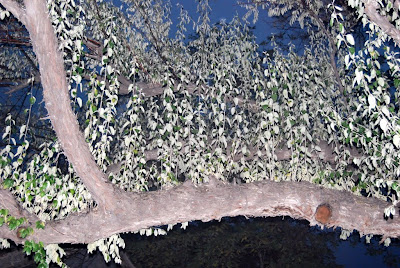We were invited to join with Tiemei's team for a weekend trip to Datong in Shanxi Province. This area is home to several UNESCO World Heritage cultural sites. Ruth was invited to join in the fun so that George could have a 'bus buddy'. As you can see Tiemei's team is mostly young women. They are all young (ave age is 26), and full of life. It made the trip more enjoyable watching them have such a great time together. Traffic was dismal! The supposed 5 hour trip took closer to 8 hours to complete.

A Most beloved elephant--just because.

Our first stop was at Yungang Grottoes. There are over 1,100 caves with some 50,000 sculptures of Buddhas and Bodhisattvas. These statutes have been around for 1,500 years, and many of them show their age, but all of them are beautiful. The grottoes were Ruth's weekend favorite. She feels that these monuments to Buddha are comparable with the cathedrals of Europe in showing man's devotion to and yearning for something greater than self.




Our next stop was a group of Buddhist temples known as Xuankong or the Hanging Monastery. The 'hanging' temple was George's weekend favorite. He admires the engineering creativity and dogged perseverance it must have taken to build this monastery. The story goes that this canyon area was a vital line of communication and the temple here was very convenient for passing pilgrims. But the Hunhe River would flood whenever there was a storm. The people wanted the temple to be safe from flooding so they built it half way up the mountain on the sheer face of the cliff.



It appears that several wooden pillars are holding up the 40 rooms of this monastery, but we were assured that the pillars are just there for effect and that the removal of a pillar or two would not lessen the structural integrity of the monastery. The two main structures are resting on rock. It seems that first a number of caves had been dug out of the cliff wall and that the major portion of the rooms were built inside these caves with a smaller portion hanging over the edge of the mountain.

Still, it was unsettling to see some of the wooden pillars being kept level by additional wooden strips. But, nevertheless we climbed up the many stairs and journeyed through the bell and drum towers, looked in on the various temple shrines, and climbed up to the upper temples as well. Looking down was troubling and somewhat dizzying but interesting and fun.

We both enjoy the little detailed embellishments of Chinese architecture. What could be more fun than a dragon bell holder?

Or a dragon rainspout with a bell around his neck?

Or a Chinese Cheshire Cat?

It seemed like a contradiction to us, but apparently Chinese Opera can be preformed at the same time people are lighting incense and prayer candles and praying.

The Great White Dagoba


The many forms of prayer offerings.




This is a marvelous tree!
It's branches are growing straight up towards God. It is what a Bodhi tree should look like. If not a Bodhi tree then it should at least be a prayer-tree symbolizing how our prayers travel upwards towards heaven. Actually, our thoughts and actions should also reflect that upwards motion.

Chinese temples are built on a hill or a mountain. There will be many small temples leading ever upwards towards the main temple which is on the highest spot.

Ruth is reading an article on Temple Motifs in Jewish Mysticism where the author (William Hamblin) was saying that "the heavens were conceived of as a vast palatial temple-complex, composed of a series of concentric courts, halls, chambers, and shrines. The heavens are enclosed by a wall which was built of white marble (or crystal)" This seemed like a perfect description of a Chinese Buddhist temple.



The Wutai Mountain is one of the four major Buddhist Mountains in China.
We have seen one, we have three more to see.

The trip to Datong took eight hours the trip home took 12. Nightmare! There were hundreds of huge trucks (maybe coal trucks) traveling on a tiny two lane country mountain road. Our driver was inventive if not down right dangerous in his driving. Notice that he is making a third lane right in the middle of a long line of trucks going both directions. Scary! We tried not to think about it and just be grateful for the forward movement bringing us closer to home.












